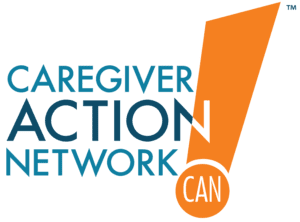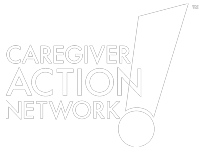Breaking Through Denial Barriers: Caregiver Communication Strategies
Breaking Through Denial Barriers: Caregiver Communication Strategies

Understanding Denial: A Normal Coping Mechanism
Denial coping mechanisms aren’t inherently negative—they’re natural responses to pain and significant life changes. Caregiving and denial often go hand-in-hand because denial provides individuals time to process overwhelming emotions and adapt to new realities.
While denial in caregiving situations can delay necessary actions and decision-making, it serves an important psychological function. It allows people to overcome fear and gradually accept life-altering circumstances. Understanding this helps caregivers approach coping with illness and disability with greater empathy and realistic expectations.
However, when denial prevents essential planning or creates safety risks, caregivers must employ thoughtful strategies for caregiver success to move the relationship forward constructively.
Impact of Denial on Caregivers and Loved Ones
Caregiving relationship dynamics become strained when denial creates emotional distance between family members. This disconnect often leaves caregivers feeling isolated and overwhelmed, contributing to caregiver stress and solutions becoming more critical.
Consider Kathleen’s experience with her husband Scott, who has Lou Gehrig’s disease. “Every time I mention our finances, Scott changes the subject,” she explains. “I don’t want to nag, but we need long-term caregiving plans. I feel trapped by his inaction and manipulated by it.” This scenario illustrates how denial in caregiving affects both partners, creating frustration and anxiety about the future.
These family caregiving struggles often escalate when both parties operate from different emotional places, unable to hear or understand each other’s perspectives. The caregiver seeks control and planning, while the care recipient needs time to process their changing circumstances.
Empathy and Communication: Key to Breaking Through
Effective communication in caregiving begins with recognizing how illness or disability affects someone’s sense of empowerment. Social worker Linda Samuel explains that being “done to” by circumstances makes people feel vulnerable and strips away their sense of control.
Successful caregiver communication strategies involve verbalizing the fears your loved one may be experiencing. Emotional communication in caregiving requires showing genuine empathy and understanding of their loss and fears about the future.
Here’s a sample approach for breaking through denial barriers:
“Mary, I understand you wish things hadn’t happened this way. Your feelings about the accident are completely valid, and being frightened is natural—I’m scared too. While wishing you were still healthy is understandable, we need to explore our options moving forward so we can live as fully as possible.”
This approach acknowledges pain while introducing action-oriented language like “choices,” “options,” and “possibilities” that support empowerment in caregiving relationships.
Clear Objectives: Know What You Want to Achieve
Before initiating difficult conversations, caregivers must understand their own emotions and establish clear goals. Caregiver emotional health depends partly on identifying what drives the urgency for specific actions or decisions.
When examining caregiving decisions, most caregiver concerns fall into three categories:
- Physical safety or mental wellbeing concerns: “I’m afraid she might go into a coma without a living will. I need to know what she would want.”
- Future security issues: “We’re in our sixties caring for Julia, but when we’re gone, she’ll need other arrangements. We can’t die before this is resolved.”
- Shared decision-making needs: “My father refuses to wear a personal response buzzer despite his recent heart attack. I’m concerned he’ll have another attack when no one’s around.”
Understanding your underlying concerns helps you communicate more effectively about coping with caregiving challenges rather than simply demanding specific actions.
Framing Requests: Focus on Your Own Needs
One of the most effective caregiver communication strategies involves framing requests around your own emotional needs rather than what the person in denial “should” do. This approach often generates more positive responses because it appeals to their concern for you.
For example, instead of demanding action, try: “I am terrified every time you drive. You seem distracted and lack the concentration you once had. I can’t stop you from driving, but I don’t have to ride with you. I’ll take my own car from now on.”
This strategy helps loved ones in denial move outside their own perspective and consider the impact of their inaction on family members. It also helps caregivers reclaim power and control, which is vital for overcoming caregiver burnout.
When You Can’t Break Through
Sometimes, despite your best caregiver communication strategies, you must act independently. Taking action yourself isn’t abandoning the relationship—it’s affirming your commitment to carrying on with life while managing caregiver stress and solutions.
Acting independently offers several benefits for coping with caregiving challenges:
- Reduced anxiety knowing something has been done
- Development of new skills and capabilities
- Creation of new possibilities and options
- Gradual breakdown of barriers to your goals
Your independent action might trigger the desired reaction. Nobody wants exclusion from crucial decisions, especially adults who value self-determination. Consistent behavior may eventually motivate your loved one to participate in caregiving decisions.
Strategies for Encouraging Collaboration
When implementing strategies for caregiver success, present solutions that include active participation from both parties. Clearly communicate your feelings and proposed actions, always offering your loved one the first option to collaborate on solving mutual problems.
Effective communication in caregiving includes being prepared with alternatives and explaining which suggestions involve your loved one’s participation. If necessary, communicate your intent to act independently, explaining that the current situation is unsustainable for your caregiver emotional health.
What’s to Be Gained
Breaking through denial barriers requires fortitude, empathy, concentration, and self-awareness. When you successfully navigate these challenges, even temporarily, you accomplish significant personal growth while improving caregiving relationship dynamics.
As one caregiver whose wife has rheumatoid arthritis shared: “I didn’t realize what a rebirth I would feel. Now that my wife works with me on finding solutions, life is easier. It’s a relief to turn off my broken record.”
Remember that when coping with illness and disability, not all solutions will be perfect. The goal is making the best of difficult situations while maintaining your wellbeing and moving forward with essential long-term caregiving plans.



